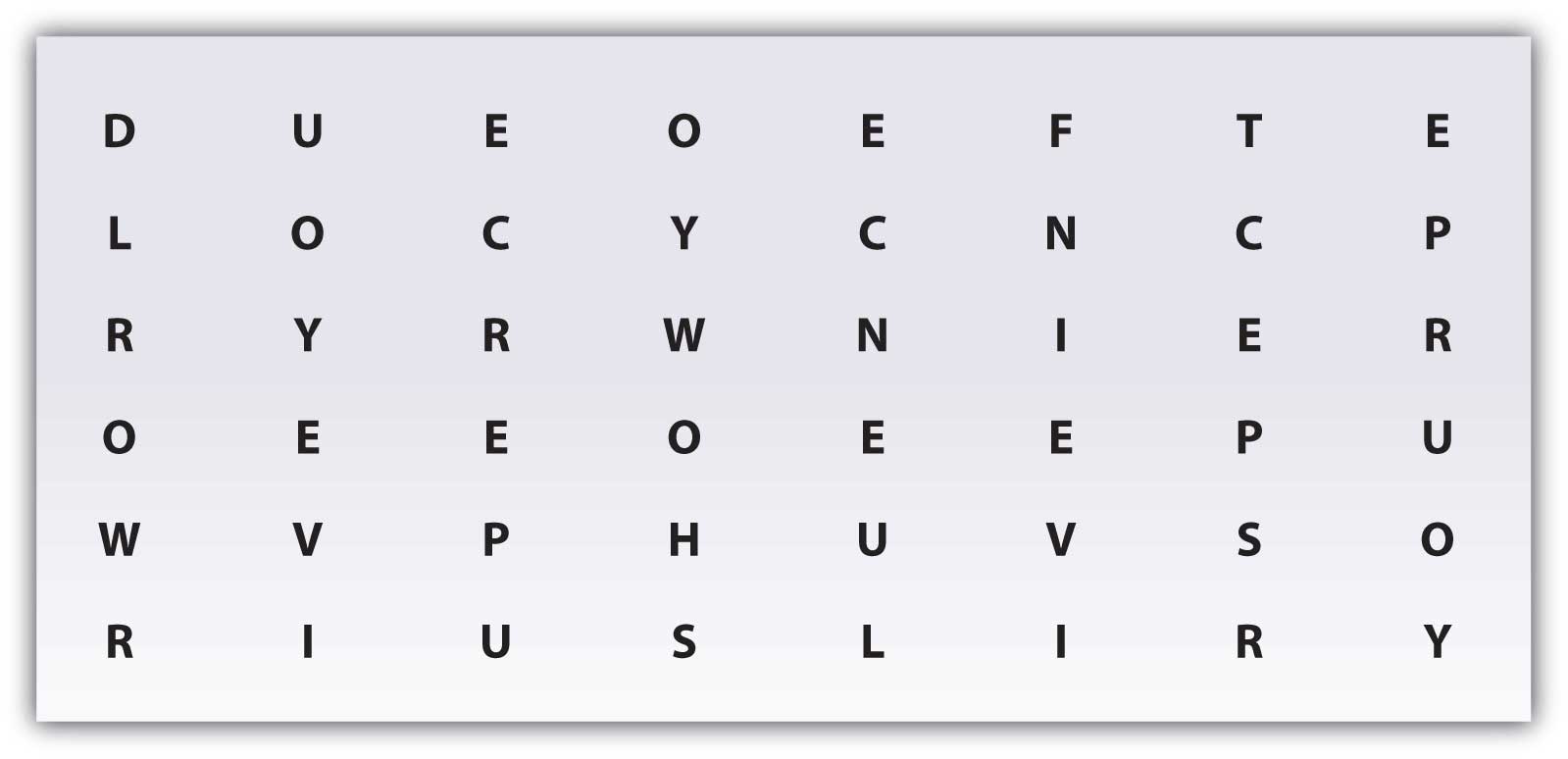Chapter 3: Understanding Your Audience
Your mind is like a parachute. It works best when it’s open.
–Anonymous
To see an object in the world we must see it as something.
–Ludwig Wittgenstein
You will either step forward into growth or you will step back into safety.
–Abraham Maslow
Getting Started
Introductory Exercises
1. In order to communicate with others, you need to know yourself. Please complete a personal inventory, a simple list of what comes to mind in these five areas:
- Your knowledge: What is your favorite subject?
- Your skills: What can you do?
- Your experience: What has been your experience writing to date?
- Your interests: What do you enjoy?
- Your relationships: Who is important to you?
2. To be a successful communicator, it is helpful to be conscious of how you view yourself and others. Please consider what groups you belong to, particularly in terms of race, ethnicity, or culture. Imagine that you had to communicate your perception of just one of these groups. Please choose five terms from the list below, and indicate the degree to which you agree or disagree that the term describes the group accurately.
| Term | Describes the Group Accurately | ||||
|---|---|---|---|---|---|
| 1—Strongly disagree | 2—Somewhat disagree | 3—Neither agree nor disagree | 4—Somewhat agree | 5—Strongly agree | |
| Independent | |||||
| Dependent | |||||
| Hardworking | |||||
| Lazy | |||||
| Progressive | |||||
| Traditional | |||||
| Sophisticated | |||||
| Simple | |||||
| Creative | |||||
| Practical | |||||
Introductory Exercises (cont.)
3. Now consider a group that you have little or no contact with. Please choose five terms (the same ones or different ones) and again indicate how accurately they describe the group. How do your results compare with those in Exercise 2?1
4. Please find the hidden message2:
5. Connect the dots by drawing four straight lines, making sure not to lift your pen from the paper or retrace lines3.
Communicating involves the translation of your thoughts and ideas to words. Speaking or writing involves sharing your perspective with others. If you talk to yourself, the action is a reflection of the communication process, but you play the role of audience. In your head, you may make sense of your words and their meaning, but when I hear what you said, what you meant may escape me. I might not “get it” because I don’t know you, your references, your perspectives, your word choices, or your underlying meaning and motivation for speaking in the first place. In this chapter we’ll discuss perspectives, and how people perceive information, as we learn how communication is an imperfect bridge to understanding. It requires our constant attention, maintenance, and effort.
Knowing your audience involves understanding others, and their perspectives, to see if they understand your words, examples, or the frames of reference you use to communicate your experiences, points, and conclusions. Ask yourself when you last had a miscommunication with someone. No doubt it was fairly recently, as it is for most people.
It’s not people’s fault that language, both verbal and nonverbal, is an imperfect system. We can, however, take responsibility for the utility and limitations of language to try to gain a better understanding of how we can communicate more effectively. As a communicator, consider both the role of the speaker and the audience and not only what and how you want to communicate but also what and how your audience needs you to communicate with them in order to present an effective message.
Take, for example, the word “love.” Yes, we recognize those four little letters all in a row, but what does it really mean? You can use it to describe the feelings and emotions associated with your mother, a partner, or perhaps your dog. Or you might say you love chocolate cake. Does your use of the word in any given context allow the audience to get any closer to what you mean by this word, “love”? The key here is context, which provides clues to how you mean the word and what its use means to you. The context allows you to close the gap between your meaning of “love” and what the receiver, or audience, has in their range of understanding of the same word. Your experiences are certainly different, but through clues, contexts, and attempts to understand each other’s perspectives, we can often communicate more effectively.
This gives rise to an issue: how do I deal with twenty or twenty-five “perspectives” in a classroom or a reading audience of infinite size and try to narrow the gap with each audience member? Before we tackle this question, let’s first follow the advice given by the character Polonius in Shakespeare’s Hamlet: “To thine own self be true.” This relates to the notion that you need to know yourself, or your perspective, before you can explore ways to know others and communicate more effectively. You will examine how you perceive stimuli, choosing some information over others, organizing the information according to your frame of reference, and interpreting it, deciding what it means to you and whether you should remember it or just ignore it and move on. We can recognize that not everyone tunes in to the same music, trends in clothing, or even classes, so experiences or stimuli can have different meanings. Still, we can find common ground and communicate effectively.
1Adapted from Gudykunst, W. (1994). Ethnocentrism scale and instructions. In Bridging differences: Effective intergroup communication (2nd ed., pp. 98–99). Thousand Oaks, CA: Sage.
2Adapted from McLean, S. (2003). The basics of speech communication. Boston, MA: Allyn & Bacon.
3Adapted from McLean, S. (2003). The basics of speech communication. Boston, MA: Allyn & Bacon.




